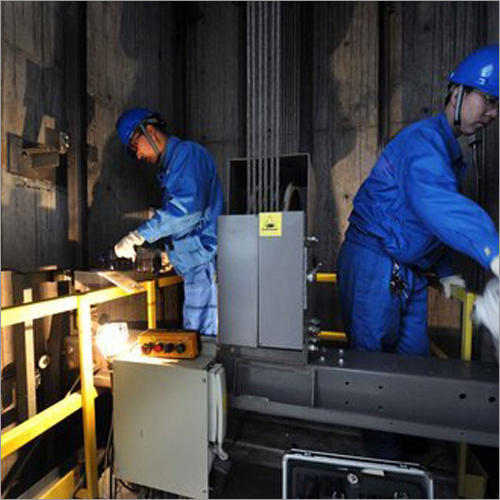Understanding System Lift Dimensions: Important for Effective Lift Service
Understanding System Lift Dimensions: Important for Effective Lift Service
Blog Article
A Detailed Technique to Enhancing Efficiency Via Strategic Lift Repair Approaches
A organized and strategic technique to raise repair service and upkeep is important to maximize efficiency and lessen downtime. By addressing common lift issues, implementing positive upkeep procedures, and establishing targeted repair strategies, facilities can maximize their lift systems to operate at peak efficiency levels.
Value of Lift Efficiency Optimization
Recognizing the relevance of maximizing lift performance is critical for ensuring effective and reliable vertical transportation systems in numerous buildings and frameworks. Lifts are essential parts of modern facilities, providing vertical mobility for owners and products within buildings of differing elevations. By maximizing lift performance, structure proprietors and center supervisors can improve user experience, boost energy performance, and rise total functional effectiveness.
Effective lift efficiency optimization includes different variables, consisting of speed, capacity, power upkeep, security, and usage demands. Appropriately maximized lifts can minimize wait times for individuals, particularly in high-traffic buildings, bring about enhanced complete satisfaction and efficiency. Furthermore, enhanced lifts add to energy savings by utilizing innovative control systems and innovations that reduce power intake without endangering performance.

Identifying Common Lift Issues
Recognizing typical lift concerns is essential for maintaining the operational effectiveness and safety and security of vertical transportation systems in buildings. Identifying these issues can assist stop malfunctions, lower downtime, and extend the life expectancy of the lift devices. One typical issue that structure managers and maintenance teams often come across is uneven or jerky activities throughout operation. This concern can be a measure of troubles with the lift's electric motor, control system, and even the positioning of the lift car.
One more widespread lift issue is strange noises originating from the lift shaft or machinery area. These noises can range from grinding or scratching noises to loud clunking sounds, all of which might indicate underlying mechanical problems that call for instant interest. Furthermore, regular door breakdowns, such as doors not opening up or shutting effectively, can disrupt the smooth flow of passengers and position security dangers.
Carrying Out Positive Maintenance Procedures
To maximize the performance and longevity of lift systems, positive maintenance measures play an important role in guaranteeing functional integrity and safety and security. lift breakdown. Implementing aggressive maintenance involves methodically checking, servicing, and fixing components before they fail, hence stopping pricey downtime and potential safety threats. Regularly set up assessments can help identify small issues prior to they escalate into major problems, inevitably prolonging the life expectancy of lift systems
One trick element of proactive upkeep is developing a thorough maintenance timetable based on maker recommendations and sector finest techniques. This schedule needs to outline tasks such as lubrication, placement checks, and element replacements at specified periods. Additionally, executing problem monitoring techniques, such as resonance analysis and thermal imaging, can assist discover very early signs of wear or breakdown.
Furthermore, training maintenance team on proper assessment strategies and preventive see this site maintenance treatments is essential for the successful implementation of aggressive upkeep measures. By promoting a culture of proactive upkeep within a company, lift systems can run at peak performance levels, lessening interruptions and making sure the safety of customers.
Establishing Targeted Repair Service Strategies
Upon examining the upkeep records and efficiency data, the engineering team can create targeted repair service strategies to resolve specific issues and optimize lift system performance. These repair strategies are tailored to the identified issues, making sure that resources are concentrated on settling important problems successfully. By focusing on repairs based on their influence on efficiency and safety, the targeted repair work plans help decrease downtime and maintenance costs while optimizing the lift system's reliability.
Creating these strategies entails a comprehensive analysis of the lift system elements, consisting of electric motors, cables, brakes, and control systems. Via this comprehensive assessment, the engineering team can determine the origin of any kind of malfunctions or deterioration in efficiency. This details is then used to produce a roadmap for the repair work process, detailing the required actions, timeline, and resources called for to resolve each issue efficiently.
Additionally, targeted fixing plans might view it include preventative measures to improve the lift system's long life and performance. By proactively dealing with prospective concerns prior to they escalate, these strategies add to the overall effectiveness and safety and security of the lift system.
Using Data-Driven Insights
Using the power of data-driven understandings is critical in optimizing lift system performance and maintenance performance. By leveraging data analytics, lift operators can make enlightened choices that cause boosted operational efficiency and expense financial savings. With the analysis of historic performance patterns, data and patterns can be determined, enabling predictive upkeep approaches to be implemented. These anticipating upkeep strategies aid protect against unexpected breakdowns, minimize downtime, and extend the lifespan of lift systems.

Conclusion
Finally, enhancing lift efficiency is important for making certain efficiency and safety in structures. By determining usual lift problems, carrying out proactive maintenance measures, establishing targeted repair work plans, and utilizing data-driven understandings, organizations can boost performance and lessen downtime. It is essential to take an extensive approach to raise fixing methods to maximize functional efficiency and make certain the longevity of lift systems.
By addressing common lift problems, executing positive upkeep actions, and more information establishing targeted repair plans, centers can maximize their lift systems to operate at peak efficiency levels.One more common lift problem is strange noises originating from the lift shaft or equipment room.Upon evaluating the maintenance documents and performance data, the design group can create targeted repair work strategies to resolve certain concerns and enhance lift system functionality. By prioritizing repairs based on their influence on performance and safety and security, the targeted fixing strategies aid minimize downtime and maintenance expenses while maximizing the lift system's reliability.
It is essential to take a detailed approach to lift repair techniques to maximize operational performance and ensure the long life of lift systems.
Report this page